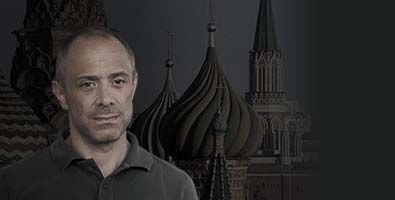Although the topic of police reform in Russia never seems to go away, it has been in the spotlight for some weeks now, at least since the sensational videos posted by former police Major Aleksei Dymovsky with allegations of massive police corruption in Novorossiisk. United Russia Duma Deputy Aleksei Makarov even proposed “abolishing” the police force and starting over – “with help from civil society and human rights groups” (too bad they have all been neutered).
(Some sadly telling indicators of the need for police reform have emerged in recent days with the arrest of police Lieutenant Artur Kositsyn on charges of committing multiple rapes. According to “The Moscow Times,” Kositsyn failed a routine psych test for the Moscow traffic police and his bosses, instead of firing him, transferred him to the Moscow suburb of Podolsk. How much did he pay? According to the same report, Kositsyn offered arresting officers a bribe of $50,000 to release him – a tidy sum for a lowly traffic cop.)
Of course, the main problem with fighting police corruption is that the police force is the main prop of Russia’s corrupt, unaccountable, and antidemocratic political regime, as New York University Professor Mark Galeotti has argued in an RFE/RL commentary: “The police are still seen as an essentially political tool and everyone from the Kremlin down to municipal authorities seem to prize loyalty over professionalism.” (See also my previous post about the police role in foisting off the falsified October regional elections.)
Today the website “Yezhednevny zhurnal” posted the latest in an excellent series of articles on measures the Russian government is taking to secure itself (to see the list of other pieces in this series, click here). This latest article details police reforms that have actually been going on for at least the last five years and that seem to have very little to do with the stated goals of fighting “organized crime, terrorism, and extremism” (unless you define “extremism,” as the Russian government often does, as “opposing the government”).
The report, which is backed up by Interior Ministry documents, notes that in 2003 the Ministry had 98 OMON units, the special troops that are used in the event of mass disorders or major security breakdowns (by comparison, the Soviet Interior Ministry had just 19 such units in 1988). By 2007, the ministry reported 121 OMON units with a total of some 20,000 officers. In addition, the Interior Ministry controls 87 OMSN units [Typo in original corrected, thanks to reader comment -- Robert], which are basically SWAT teams. However, as the article documents, OMSN units have been under a joint command with OMON since the late 1990s and this year the two forces conducted joint training exercises on “disbursing demonstrations” in four regions.
Since 2003, the Interior Ministry has created a police-aviation unit that currently has 30 helicopters, six unmanned drones, five high-altitude surveillance systems, and a dirigible. The ministry has also worked out detailed contingency plans for transferring riot police from one region to another, which it did in the case of the “car protests” in Vladivostok in March.
Ground transportation has also not been ignored. In 2006, the ministry announced plans to purchase “more than 5,500 armored vehicles” The same year, the police took delivery of 122 armored patrol buses. In 2007, the Ural Factory, which produces the vehicles, announced a production jump of nearly 60 percent and reported it was working on two shifts for the first time since 1992.
The budget for police special forces was doubled in 2005. The article concludes its summary of the equipment the Interior Ministry has purchased over the last five years or so by noting one common feature: “none of them are designed for combating organized crime.”
The “Yezhdnevny zhurnal” expose ends by noting that their research did not cover the ministry’s so-called internal troops (VV), which are also sometimes used to quell public disorder. As a rule, though, the VV forces have a different mission: “If OMON troops must reestablish political control lost as a result of peaceful mass actions, the internal troops become involved when there is an armed uprising.” So, the authors conclude, “parallel to the OMON empire a multilevel machine of internal troops is also developing, with its own special units, aviation, armored units, crisis-command centers, and so on.”
This, then, is the concrete, specific “police reform” that the Kremlin has made its top priority over the last few years, as demonstrated not least by the amount of money that has been devoted to it. Who says the talk of reform is all a lot of hot air?





